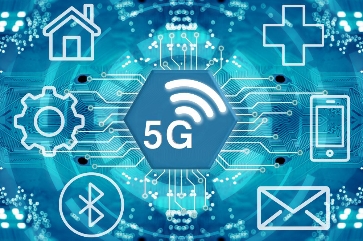
The 5G Core Network is a critical component of the 5th generation wireless network, providing the necessary infrastructure to support a wide range of services and applications.
The 5G Core Network is designed to be flexible, scalable, and secure, with a focus on network slicing, edge computing, and service-based architecture. Here are some of the key 5G Core Network Functions:








1. **Access and Mobility Management Function (AMF)**: The AMF is responsible for managing the registration, authentication, and mobility of user equipment (UE) in the network. It also handles the allocation and release of network resources.
2. **Session Management Function (SMF)**: The SMF is responsible for managing the user plane and control plane sessions, including the creation, modification, and deletion of sessions. It also handles the allocation and release of network resources.
3. **User Plane Function (UPF)**: The UPF is responsible for routing and forwarding user plane traffic between the UE and the data network. It also provides functions such as packet inspection, filtering, and marking.
4. **Data Network (DN)**: The DN is the external data network that provides access to the internet, enterprise networks, or other external networks.
5. **Policy Control Function (PCF)**: The PCF is responsible for managing the policy and charging rules for the network. It provides functions such as policy creation, modification, and deletion, as well as charging and billing.
6. **Network Repository Function (NRF)**: The NRF is a centralized repository that stores information about the network, including the configuration and capabilities of network functions.
7. **Network Slice Selection Function (NSSF)**: The NSSF is responsible for selecting the network slice that a UE should use based on the UE’s subscription and the services it is requesting.
8. **Authentication Server Function (AUSF)**: The AUSF is responsible for authenticating the UE and verifying its identity.
9. **User Data Management (UDM)**: The UDM is responsible for managing the user’s subscription data, including the user’s profile, preferences, and service settings.
10. ** Charging Data Function (CDF)**: The CDF is responsible for generating charging data records for the services used by the UE.
11. **Application Function (AF)**: The AF is responsible for providing application-level services, such as communication with external applications and services.
12. **RAN (Radio Access Network) Core Interface Function**: This function provides the interface between the RAN and the 5G Core Network, allowing for the exchange of control and user plane information.
These 5G Core Network Functions work together to provide a range of services and capabilities, including:
* Network slicing: allowing for the creation of multiple independent networks on top of a shared infrastructure
* Edge computing: providing low-latency and high-bandwidth services by processing data at the edge of the network
* Service-based architecture: allowing for the creation of services using a modular and flexible architecture
* Enhanced mobile broadband: providing high-speed and low-latency services for mobile devices
* Ultra-reliable low-latency communications: providing services that require ultra-low latency and high reliability, such as mission-critical communications
* Massive machine-type communications: providing services that support a large number of devices, such as IoT devices.
Overall, the 5G Core Network Functions are designed to provide a flexible and scalable infrastructure that can support a wide range of services and applications, while also providing a high degree of security, reliability, and performance.


Leave a Reply